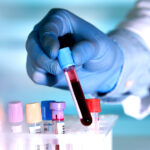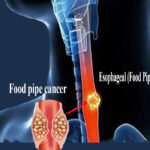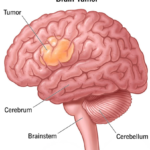How AIDS can be managed by yoga and diet therapy? AIDS can be treated naturally. Researchers have found diet therapy and yoga is very effective for AIDS.


In 1981, homosexual men with symptoms of a disease named Acquired Immuno Deficiency Syndrome (AIDS) were first described in Los Angeles and New York. The men had an unusual type of lung infection (pneumonia) and rare skin tumors called Kaposi’s sarcoma. The patients were noted to have a severe reduction of a type of cell in the blood,which is an important part of the immune system, called CD4 cells. These cells, often referred to as T cells, help the body fight infections. Shortly thereafter, this disease was recognized throughout the United States, Western Europe, and Africa.
In 1983, researchers in the United States and France described the virus that causes AIDS, now known as the Human Immunodeficiency Virus (HIV) and belonging to the group of viruses called retroviruses. More than 25 million people have died of AIDS since 1981 and young people under 25 years accounts for half of all new HIV infection. India with worlds one of the largest HIV patients has largest number of AIDS deaths.(Nearly 50% of AIDS patients die of Tuberculosis in India.)
The spread of HIV by exposure to infected blood usually results from HIV is present in the blood and genital secretions of virtually all individuals infected with HIV, regardless of whether or not they have symptoms. The spread of HIV can occur when these secretions come in contact with tissues such as those lining the vagina, anal area, mouth, or eyes (the mucus membranes), or with a break in the skin, such as from a cut or puncture by a needle.
The most common ways in which HIV is spreading throughout the world include,
- Sexual contact
- Sharing needles
- Transmission from infected mothers to their newborns
- Infection from blood transfusions or blood products
- Transferred by casual exposure, as might occur in a household setting.
- Still, theoretical risks are associated with the sharing of toothbrushes and shaving razors
To avoid sexual transmission
- Abstinence from sex until it is certain that both partners are not HIV-infected.
- The next best method is the use of latex barriers.
The most common symptoms of primary HIV infection are Fever, Aching muscles and joints, Sore throat, and; Swollen glands (lymph nodes) in the neck, Fleeting arthralgia (joint pain), Maculo papular rash, Tender lymphadenopathy, Occasionally encephalitis, Diarrhea, Mouth ulcers. Only some HIV-infected persons develop these symptoms. Other infected persons will become symptom-free (asymptomatic) after this phase of primary infection.
During the asymptomatic stage of infection, literally billions of HIV particles are produced every day and circulate in the blood. This production of virus is associated with a decline in the number of CD4 cells in the blood over the ensuing years. It probably results from a direct effect of the virus on the cell as well as the body’s attempt to clear these infected cells from the system. In addition to virus in the blood, there is also virus throughout the body, especially in the lymph nodes, brain, and genital secretions.
Some people develop symptoms, signaling the complications of HIV that define AIDS, within 1 year of infection. Others, however, remain completely asymptomatic after as many as 20 years. The average time for progression from initial infection to AIDS is eight to 10 years. The state of asymptomatic phase or even after that depends on immune system. Good immunity builds lengthy lifespan with better living where as poor immunity drag us towards deadliest stage i.e. death.
Clinical features
- Decreased production of blood cells by the bone marrow, most often causing Anaemia, and occasionally hyper pigmentation (most often of the nails).
- Damage nerves and cause peripheral neuropathy, a neurological condition with numbness and/or tingling of the feet and hands.
- Inflammation of the pancreas (pancreatitis) that causes nausea, vomiting and mid upper abdominal pain.
- Oral ulcers.
- Hypersensitivity reaction. [The hypersensitivity reaction most often causes fever and other symptoms, such as muscle aches, nausea, diarrhea, rash or cough].
- Rare kidney damage
- Hyper pigmentation, most often on the palms and soles..
In individuals not infected with HIV, the CD4 count in the blood is normally above 500 cells per cubic milliliter (mm3) of blood. HIV-infected people generally do not become at risk for complications until their CD4 cells are fewer than 200 cells per mm3. At this level of CD4 cells, the immune system does not function adequately and is considered suppressed. A low CD4 cell count signals that the person is at risk for one of the many unusual infections (the so-called opportunistic infections) that occur in individuals who are immunosuppressed.
Complications of HIV disease :
Oral thrush (yeast infection in the mouth), Chronic unexplained diarrhoea, Fevers, Weight loss, Opportunistic infections, Dementia (for example, forgetfulness).
Management through Naturopathy:
AIDS can be treated naturally. Researchers have found diet therapy and yoga is very effective for AIDS. Each individual needs to understand a basic idea behind maintaining perfect health and that is strongest mind which in turn can rebuild greater amount of immunity. The focus should be
- Improving the nutritional status
- Enhancing the functions and balance the weakened system
- Clearing the toxins from the body
- Managing Stress, Depression, Anxiety, Anger
Diet Therapy:
Proper dietary pattern that includes Fruits and juices, Drinking plenty of water, Eating in regular intervals, Avoiding artificial food products, Taking fibre rich food, Consuming plenty of macro and micronutrients helps the patient.
Hydrotherapy
- Different types of tub baths and packs helps to tonify different systems of body.
- Enema helps in elimination of toxins
- Jalanethi and sutranethi helps to activates the respiratory system and clears the pranic energy flow.
- Immersion bath with salt helps to activate the sweat pores and aids the process of elimination.
Role of Yoga :
Yoga one of the most efficient ancient therapy, today again is on revolution with a goal to change the world positively. Variety of Yogic techniques like body postures, breathing techniques, Mind stability techniques and still many others can fill up each cell of our body with powerful resistance, so that the deadly virus doesn’t dominate and attack on different organs of the body.
Yoga helps to reduce Anxiety, Depression, Stress in all the following 5 levels i.e, Annamaya Kosha, Pranamaya Kosha, Manomaya Kosha and Anandamaya Kosha. Meditation, Relaxation techniques, Asanas, Pranayamas, Kriyas. Yoga found to be very effective in increasing Parasympathetic activity thus helps in reducing Anxiety, Heart rate, Respiratory rate and Blood pressure.
Effect of yoga on endocrine system:
- Yoga Supports the thymus gland
- Improves the circulation
- Improves oxygen flow and the transfer of energy from nutrients to cells
- Improves the flow of sinuses and flushing out mucous from the lungs
- Increases the lung mobility
- Rejuvenate internal organs
- Relaxes the nervous system and boosts immune response
Effect of yoga on cardiovascular system:
Improves blood circulation, Tonify the cardiac muscles and improves the oxygenation
Effect of yoga on digestive system:
Yogic kriyas enhances the immunity of Gastro Intestinal Tract and Improves digestive power
Effect of yoga on respiratory system:
Strengthens the respiratory muscles, Increases the vital capacity, increased oxygenation of blood.
AIDS though existing in the body, one can lead a healthy life with powerful vitality and stronger, peaceful mind.


Dr Venkataramana Hegde
Veda Wellness Center
Nisarga Mane, Sirsi,
Uttarakannada District
Ph:9448729434












